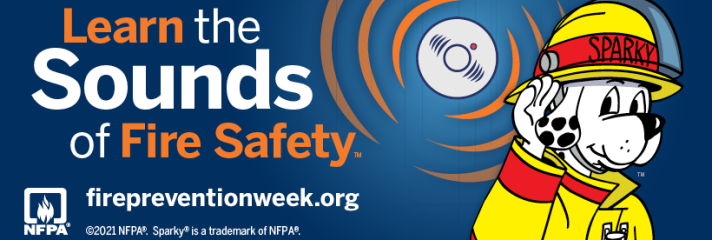
Fire Safety Tips for Families
FIRE PREVENTION
Smoke Alarms
- A continues set of three loud beeps – beep, beep beep – means smoke or fire. Get out, call 9-1-1, and stay out.
- A single “chirp” every 30 or 60 seconds means the battery is low and must be changed.
- All smoke alarms must be replaced after 10 years.
- Chirping that continues after the battery has been replaced means the alarm is at the end of its life and the unit must be replaced.
CO Alarms
- A continuous set of four loud beeps – beep, beep, beep, beep – means carbon monoxide is present in your home. Go outside, call 9-1-1, and stay out.
- A single chirp every 30 or 60 seconds means the batter is low and must be replaced.
- CO alarms also have an “end of life” sound that vary by manufacturer. This means it’s time to get a new CO alarm.
- Chirping that continues after the battery has been replaced means the alarm is at the end of its life and the unit must be replaced.
Make sure your smoke and CO alarms meet the needs of everyone in your home, including those with sensory or physical disabilities.
- Install a bedside alert device that responds to the sound of the smoke and CO alarms. Use of a low frequency alarm can also wake a sleeping person with mild to severe hearing loss.
- Sleep with your mobility device and glasses close to your bed.
- Keep pathways like hallways lit with nigh lights and free from clutter to make sure everyone can get our safely.
More information and activities about #FirePreventionWeek can be found at https://www.nfpa.org/fpw, including a printable Alarms Tip Sheet!
Frequently Asked Questions about smoke and carbon monoxide (CO) alarms
Q: What’s the difference between smoke alarms and carbon monoxide (CO) alarms? Why do I need both?
A: Smoke alarms sense smoke well before you can, alerting you to danger. In the event of fire, you may have as little as 2 minutes to escape safely, which is why smoke alarms need to be in every bedroom, outside of the sleeping areas (like a hallway), and on each level (including the basement). Do not put smoke alarms in your kitchen or bathrooms.
Carbon monoxide is an odorless, colorless gas that displaces oxygen in your body and brain and can render you unconscious before you even realize something is happening to you. Without vital oxygen, you are at risk of death from carbon monoxide poisoning in a short time. CO alarms detect the presence of carbon monoxide and alert you so you can get out, call 9-1-1, and let the professionals check your home.
Q: How do I know which smoke and CO alarm to choose for my home?
A: Choose an alarm that is listed with a testing laboratory, meaning it has met certain standards for protection. Whether you select a unit that requires yearly changing of batteries, or a 10-year unit that you change out at the end of the 10 years, either will provide protection.
CO alarms also have a battery backup. Choose one that is listed with a testing laboratory. For the best protection, use combination smoke and carbon monoxide alarms that are interconnected throughout the home. These can be installed by a qualified electrician, so that when one sounds, they all sound. This ensures you can hear the alarm no matter where in your home the alarm originates.
Every year, the majority of fire deaths in North America happen at home. Home fires today burn faster than ever. In a typical home fire, occupants may have as little as one to two minutes to escape safely from the time the smoke alarm sounds.
A home escape plan should include the following:
- Two exits from every room in the home – usually a door and a window
- Properly installed and working smoke alarms
- A meeting place outside in front of the home where everyone will meet after they exit
- A call to 9-1-1 or the local emergency number from a cell phone or a neighbor’s phone
Install smoke alarms in every sleeping room, outside each separate sleeping area, and on every level of the home, including the basement.
Cooking is the leading cause of home fires and home fire injuries. The leading cause of fires in the kitchen is unattended cooking.
All heaters need space. Keep anything that can burn at least 3 feet (1 metre) away from heating equipment.

